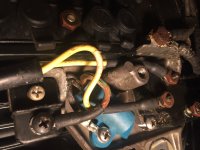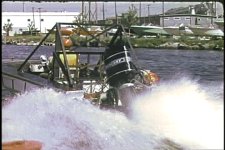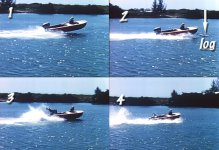1977 Mercury 850 is coming out of storage after 30 years. Compression is good, and I was told it ran great when it was stored. We'll see.
I'm replacing fuel lines, replacing crispy wiring, replaced the trigger, and will remove the carbs to clean any accumulated debris.
The blue mercury tilt switch wire insulation is crispy. Will the motor run with the switch disconnected? When the motor is vertical, is the mercury switch open or closed?

I'm replacing fuel lines, replacing crispy wiring, replaced the trigger, and will remove the carbs to clean any accumulated debris.
The blue mercury tilt switch wire insulation is crispy. Will the motor run with the switch disconnected? When the motor is vertical, is the mercury switch open or closed?




